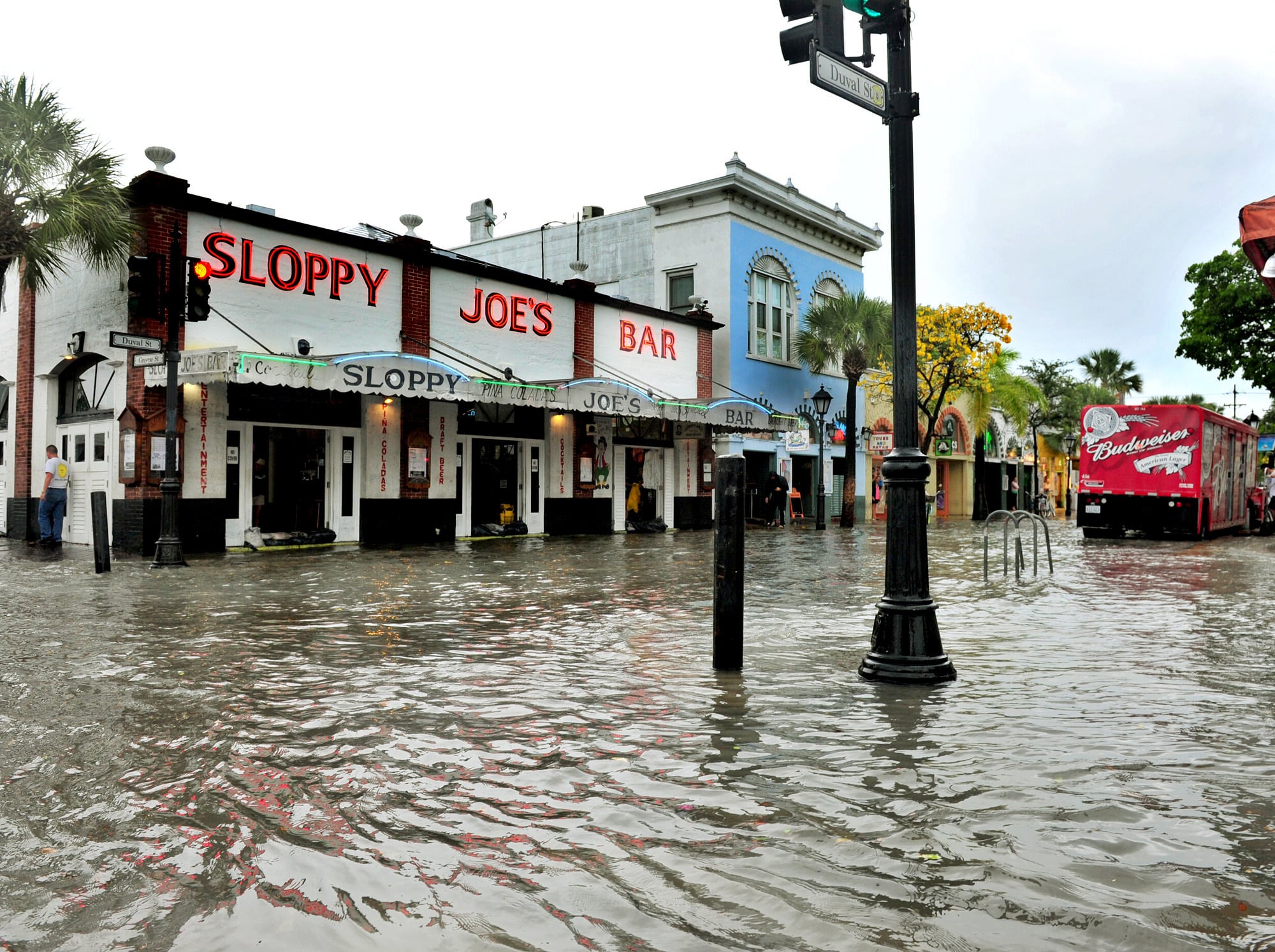Florida Keys leaders consider plans to keep climate change impact at bay

Skift Take
Hurricane storm surge can inundate the narrow, low-lying Florida Keys, but that is far from the only water worry for officials.
A tidal gauge operating since before the Civil War has documented a sea level rise of 9 inches in the last century, and officials expect that to double over the next 50 years. So when building a new Stock Island fire station, county authorities went ahead added a foot and a half over federal flood planning directives that the ground floor be built up 9 feet.
Seasonal tidal flooding that was once a rare inconvenience is now so predictable that some businesses at the end of Key West's famed Duval Street stock sandbags just inside their front doors, ready anytime.
"It's really easy to see during our spring high tides that the sea level is coming up — for whatever reason — and we have to accommodate for that," said Johnnie Yongue, the on-site technician at the fire station for Monroe County's project management department.
While New York City's mayor was announcing a dramatic multibillion-dollar plan for flood walls and levees to hold back rising water levels there, sea walls like those that encase the Netherlands wouldn't help much in the Keys, as a lack of coastal barriers isn't the island chain's only problem.
"Our base is old coral reef, so it's full of holes," says Alison Higgins, the sustainability coordinator for the city of Key West. "You've got both the erosion and the fact that (water) just comes up naturally through the holes."
The Keys' plans for adapting to rising sea levels sound a lot like the way they prepare for hurricanes: track the incoming disturbance, adjust infrastructure accordingly and communicate potential risks to residents — all, hopefully, without scaring off the tourists who treasure the islands for their fishing, Technicolor sunsets, eccentric characters and a come-as-you-are social scene that has attracted the likes of Ernest Hemingway, U.S. presidents and flamboyant female impersonators.
In many sea level projections for the coming century, the Keys, Miami and much of southern Florida partially sink beneath potential waves. However, officials are quick to note that the Keys' beloved resorts and marinas and airport — with a runway averaging just over 2 feet above sea level — aren't disappearing underwater overnight.
The Keys and three South Florida counties agreed in 2010 to collaborate on a regional plan to adapt to climate change. The first action plan developed under that agreement was published in October and calls for revamped planning policies, more public transportation options, stopping seawater from flowing into freshwater supplies and managing the region's unique ecosystems so that they can adapt, too.
Before writing the plan, the counties reviewed regional sea level data and projected a rise of 9 to 24 inches in the next 50 years.
"The rate's doubled. It would be disingenuous and sloppy and irresponsible not to respond to it," Monroe County Administrator Roman Gastesi, who oversees the Keys.
In addition to the regional plan, Monroe County aims to reduce greenhouse gas emissions 20 percent below 2005 levels by 2020 and to incorporate future sea level rise projections into infrastructure planning.
"We clearly have the most to lose. If sea-level rise is not curtailed by immediate reductions in greenhouse gases, the Florida Keys may eventually become unlivable," according to a March draft of the county's plans. "Planning decisions should take into consideration medium to extreme sea level rise predictions."
Sea level rise will be considered as projects come up, Gastesi said. Once the Stock Island fire station is completed, next in line for possible elevation or additional drainage are a nearby park, then roads and bridges.
In Key West, city officials are exploring the use of cisterns to catch rainwater for non-potable uses, to avoid taxing mainland freshwater resources.
Key West also wants to switch its municipal vehicle fleet to hybrid or electric vehicles but is concerned that their low-hanging batteries will render them useless in storm-flooded streets. The conundrum illustrates the shift in the worldwide conversation on global warming, from focusing on cutting greenhouse gas emissions to adapting to climate change.
"How do we both want to go greener and mitigate our carbon footprint but at the same time adapt to the fact that the sea water is still coming up on us anyway?" Higgins says.
The Keys are among the cities and coastal areas worldwide building or planning defenses to protect people and infrastructure from more powerful storm surges and other effects of global warming.
New York City has proposed installing removable flood walls, restoring marshes, and flood-proofing homes.
In Cuba, the largest island in the Caribbean and one dependent on European and Canadian tourists, inspectors and demolition crews are planning to raze thousands of houses, restaurants, hotels and improvised docks to restore much of the coast to something approaching its natural state. A luxury tourist destination, the Maldives, has built a seawall around its capital, plans to relocate residents from vulnerable islands to better protected ones and is creating new land through land reclamation, expanding existing islands or building new ones.
As the Keys have realized, adaptations to climate change have to be made on a case-by-case basis, says Joe Vietri, director of the Army Corps of Engineering's National Planning Center of Expertise for Coastal Storm Damage Reduction, which has begun a $20 million study exploring ways to protect the Northeast and Mid-Atlantic region from sea level rise and extreme flooding caused by hurricanes.
"The good news is if you start now, you have plenty of time to affect some meaningful change," Vietri said. "I'm very pleased with the work that a lot of municipalities are doing. They got a major wake-up call during (Superstorm) Sandy."
The study will weigh the pros and cons of defenses such as sea walls, maintaining barrier islands and marshes and even reducing the number of people living along the coastline.
"You don't necessarily rip up communities, as a rule, in the U.S. You have to balance these things," Vietri said. "In some cases it might make sense in areas where there hasn't been heavy investment in development to limit development in those areas and allow the water to do what it needs to do."
Copyright (2013) Associated Press. All rights reserved. This material may not be published, broadcast, rewritten, or redistributed.![]()
Skift’s in-depth reporting on climate issues is made possible through the financial support of Intrepid Travel. This backing allows Skift to bring you high-quality journalism on one of the most important topics facing our planet today. Intrepid is not involved in any decisions made by Skift’s editorial team.




